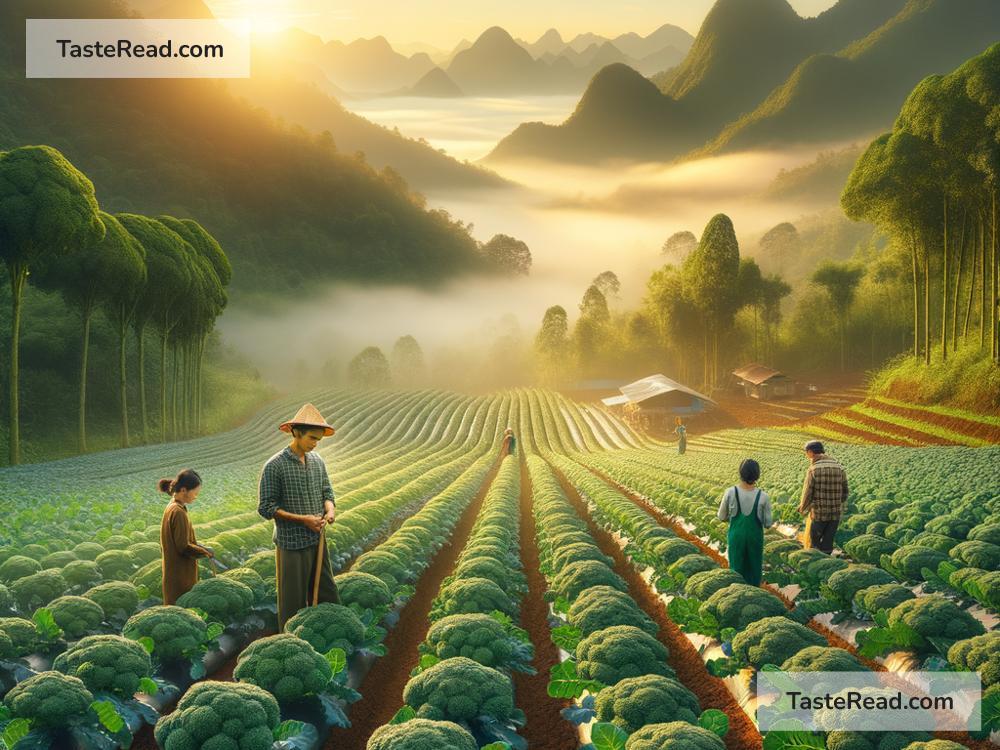The Fascinating Cultivation Techniques for Broccoli
Broccoli is one of the most loved vegetables around the world. Its vibrant green color, nutritious content, and versatility in recipes make it a favorite for health-conscious individuals and food lovers alike. But did you know that growing broccoli requires special attention and fascinating techniques? In this blog, we’ll break down how broccoli is cultivated in simple English, so you can better appreciate what goes into getting this superfood onto your plate.
What Is Broccoli?
Before diving into the cultivation process, let’s take a quick look at what broccoli is. Broccoli belongs to the cabbage family called Brassicaceae. It’s related to other vegetables like cauliflower, kale, and Brussels sprouts. The part of the plant we eat is actually the flower head, surrounded by tiny green buds. Broccoli is full of vitamins, minerals, fiber, and antioxidants, making it a powerhouse of nutrition.
Where Does Broccoli Grow Best?
Broccoli grows best in cool weather. It doesn’t like extreme heat or frost, which is why it’s commonly grown in the spring or fall. Farmers and gardeners choose a spot where broccoli can enjoy sunshine for at least 6 hours a day, along with soil that’s rich in nutrients and drains well. It thrives in soil with a pH level between 6.0 and 7.0, meaning the soil should neither be too acidic nor too alkaline.
The Start: Planting Broccoli Seeds or Seedlings
There are two main ways to start growing broccoli: from seeds or from seedlings (young plants). If using seeds, farmers or gardeners sow them in trays filled with nutrient-rich soil. These trays are kept in a warm spot, allowing the seeds to sprout into tiny plants within 4-7 days. Once the seedlings grow a few leaves, they are ready to be transferred to the field.
Some growers skip the seed stage and buy ready-to-plant seedlings from nurseries. This saves time and ensures healthy plants. Regardless of the method, planting broccoli involves spacing the plants properly. Each plant needs room to grow, usually about 18-24 inches apart. Rows are spaced 2-3 feet apart. This spacing helps ensure that the broccoli heads grow large and aren’t cramped.
Preparing the Soil
Broccoli is a heavy feeder, meaning it pulls lots of nutrients from the soil as it grows. Before planting, farmers prepare the soil by adding compost or manure to make it fertile. Sometimes, they use organic fertilizers that provide nitrogen, phosphorus, and potassium, which are essential nutrients for plant growth.
A unique technique used by experienced growers is “crop rotation.” This means they don’t plant broccoli in the same spot every year. Rotating crops helps prevent soil diseases and pests that could harm the broccoli plants.
Transplanting and Care
If the broccoli was started as seedlings, they are carefully transplanted into the field with their roots intact. Farmers gently place each seedling into the ground, making sure the roots are snug but not crushed. Once the plants are in place, they water them thoroughly to help the roots settle.
Broccoli loves water, but not too much! It needs consistent moisture to grow strong, so farmers water it regularly, especially if the weather is dry. However, they avoid overwatering, as soggy soil can damage the plant’s root system.
Farmers also pay special attention to weeds. By using mulch—organic material like straw or grass spread around the base of the plants—they prevent weed growth. Mulch also helps the soil retain moisture and stay cool during warm days.
Pest and Disease Control
Like any crop, broccoli faces threats from pests and diseases. Common pests include cabbage worms, aphids, and flea beetles, which nibble on the leaves and damage the broccoli heads. To combat these pests, farmers often use natural methods like introducing beneficial insects, such as ladybugs, that eat the harmful ones.
Diseases like clubroot and downy mildew can also affect broccoli plants. To prevent these issues, farmers ensure good air circulation between plants and avoid overwatering. Some people also choose organic pesticides or disease-resistant broccoli varieties to keep their crops healthy.
The Wait: Growing Broccoli Heads
Once the plants are established, it’s time to watch them grow! One of the fascinating things about broccoli is how its flower head forms. Over weeks, the plant develops a tall, thick stem, and tiny buds start appearing at the center. These buds grow larger until they form a beautiful green cluster—that’s the broccoli head we eat! At this stage, farmers monitor the plants closely. They make sure the buds stay tight and don’t start flowering, which would make the broccoli less tasty.
Harvesting Broccoli
The most exciting part of growing broccoli is harvesting it. Farmers know it’s time to harvest when the heads are firm and tight, typically about 3-5 inches wide. Using sharp knives or scissors, they cut the heads off the main stem, leaving a few inches of stalk attached. But that’s not the end! If the plant is healthy, it can grow smaller side shoots, which can be harvested later.
It’s important to harvest broccoli quickly and store it in cool conditions to preserve its freshness. Broccoli is highly perishable, so farmers work fast to deliver it to markets or stores.
Conclusion
Cultivating broccoli is a rewarding but detailed process. From seed to harvest, farmers care for these plants with dedication, ensuring they have the right environment to grow. Next time you enjoy your broccoli steamed, roasted, or in a salad, take a moment to appreciate the fascinating techniques and hard work that went into growing this amazing vegetable. Maybe you’ll even be inspired to try growing your own!
Happy eating and (hopefully) gardening!


